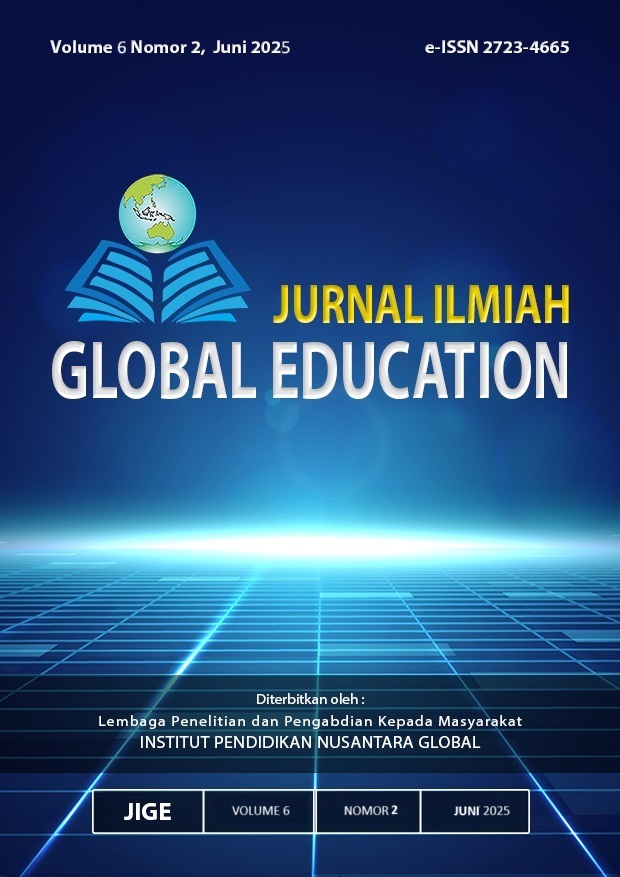An Evaluation of English for Medical Purposes Materials in Language Training Institutions: A Needs-Based Approach
DOI:
https://doi.org/10.55681/jige.v6i2.4001Keywords:
English for Medical Purposes, material evaluation, needs analysis, medical communication, curriculum designAbstract
This study evaluates English for Medical Purposes (EMP) materials used in language training institutions through a needs-based approach. Using a mixed-methods design, the research gathered data from medical students, instructors, and clinical supervisors to assess the relevance and effectiveness of EMP materials. Quantitative analysis revealed that while several units (e.g., “In and Around the Hospital,” “Admissions,” and “Monitoring the Patient”) effectively reflect authentic professional communication, others lacked contextual depth and interactive tasks. Qualitative insights highlighted strengths in authentic scenarios and practical dialogues, as well as gaps in empathetic and interprofessional communication training. The findings underscore the importance of aligning EMP materials with real-world clinical needs by integrating communicative competence, cultural appropriateness, and professional authenticity. This study provides recommendations for enhancing EMP curricula to support healthcare professionals in developing the language skills essential for patient-centered care and interdisciplinary collaboration.
Downloads
References
Alnahdi, M. A., Alhaider, A., Bahanan, F., Aldubaikhi, A., Aljehani, A., Omair, A., & Alaqeel, M. (2021). The impact of the English medical curriculum on medical history taking from Arabic speaking patients by medical students. Journal of Family Medicine and Primary Care, 10(3), 1425–1430. https://doi.org/10.4103/jfmpc.jfmpc_1946_20
Anon. (2007). An analysis of medical students’ English language needs.
Anon. (2016). English for medical purposes for Saudi medical and health professionals. Advances in Language and Literary Studies, 7(6), 243–248. https://doi.org/10.7575/aiac.alls.v.7n.6p.243
Anon. (2018). The need for English for nursing purposes course in a Saudi Arabian nursing college.
Antic, Z. (2007). Forward in teaching English for medical purposes (Vol. 14).
Antic, Z., & Milosavljevic, N. (2016). Some suggestions for modelling a contemporary medical English course design based on need analysis. Lingua, 184, 69–78. https://doi.org/10.1016/j.lingua.2016.06.002
Arani, J. A. (2014). A blended-learning setting in English for medical purposes course incorporating competencies (Vol. 1).
Basturkmen, H. (2010). Developing courses in English for specific purposes. Palgrave Macmillan.
Basturkmen, H. (2019). ESP teacher education needs. Language Teaching, 52(3), 318–330. https://doi.org/10.1017/S0261444817000398
Basturkmen, H. (2022). Current trends in ESP research in the Asia Pacific region. World Englishes, 41(4), 512–522. https://doi.org/10.1111/weng.12601
Bellés-Fortuño, B. (2018). Multimodality in medicine: How university medical students approach informative leaflets. System, 77, 28–38. https://doi.org/10.1016/j.system.2018.02.012
Bowen, G. A. (2009). Document analysis as a qualitative research method. Qualitative Research Journal, 9(2), 27–40. https://doi.org/10.3316/QRJ0902027
Bran, E. (n.d.). Course design for medical English.
Bratanych, O., & Vyshnevska, K. (2018). Competency-based approach to teaching English for specific purposes (ESP) and business English (BE). Scientific Journal of Polonia University, 27(2), 106–115. https://doi.org/10.23856/2712
Canale, M., & Swain, M. (1980). Theoretical bases of communicative approaches to second language teaching and testing. Applied Linguistics, 1(1), 1–47. https://doi.org/10.1093/applin/I.1.1
Chen, Q. (2013). The development of an international medical education program with an emphasis on English for specific purposes.
Chia, H.-U., Johnson, R., Chia, H.-L., & Olive, F. (1999). English for college students in Taiwan: A study of perceptions of English needs in a medical context. English for Specific Purposes, 18(2), 107–119.
Choi, L. J. (2021). Implementing English for Medical Purposes (EMP) in South Korea: Nursing students’ ongoing needs analysis. Nurse Education Today, 104, 104989. https://doi.org/10.1016/j.nedt.2021.104989
Deo, M. (2012). Research training for medical students in developing nations. Medical Education, 46(11), 1124–1125. https://doi.org/10.1111/medu.12022
Dick, W., & Carey, L. (2009). The systematic design of instruction (7th ed.). Pearson.
Dudley-Evans, T., & St John, M. J. (1998). Developments in English for Specific Purposes: A multi-disciplinary approach. Cambridge University Press.
Gall, M. D., Gall, J. P., & Borg, W. R. (2007). Educational Research: An Introduction (8th ed.). Pearson Education.
Gilmore, A. (2007). Authentic materials and authenticity in foreign language learning. Language Teaching, 40(2), 97–118. https://doi.org/10.1017/S0261444807004144
Henje, H. N., Sundberg, C. J., & Alfvén, T. (2025). Nursing and medical students’ views on their knowledge related to the Sustainable Development Goals – A mixed methods study at three Swedish universities. BMC Medical Education, 25(1). https://doi.org/10.1186/s12909-025-06991-5
Hutchinson, T., & Waters, A. (1987). English for specific purposes: A learning-centred approach. Cambridge University Press.
Long, M. H. (2005). Second language needs analysis. Cambridge University Press.
Noprival, & Alfian. (2024). Language learning strategies used by Indonesian English for medical purposes students in higher education. Learning: Research and Practice. https://doi.org/10.1080/23735082.2024.2317829
Piaget, J. (1954). The construction of reality in the child. Basic Books.
Pill, J., & McNamara, T. (2016). How much is enough? Involving occupational experts in setting standards on a specific-purpose language test for health professionals. Language Testing, 33(2), 217–234. https://doi.org/10.1177/0265532215607402
Piroozan, A., Boushehri, E., & Fazeli, R. (2016). A review of English for medical purposes for Iranian EFL learners. Journal of Advances in English Language Teaching, 4(2), 24–29.
Poedjiastutie, D., & Oliver, R. (2017). English learning needs of ESP learners: Exploring stakeholder perceptions at an Indonesian university. TEFLIN Journal, 28(1), 1–21. https://doi.org/10.15639/teflinjournal.v28i1/1-21
Rashid, M. A., Smith, V., & Mayberry, J. F. (2023). English language medical schools in China: An analysis of international medical graduates practicing in the UK. Journal of Medical Education and Curricular Development, 10, 238212052311637. https://doi.org/10.1177/23821205231163719
Rashid, M. A., Xu, L., Nicholson, J. G., & Gill, D. (2020). ‘Doctor, teacher, translator:’ International medical students’ experiences of clinical teaching on an English language undergraduate medical course in China. Education for Health, 33(1), 20–23. https://doi.org/10.4103/efh.EfH_212_19
Silverman, J., Kurtz, S., & Draper, J. (2013). Skills for communicating with patients (3rd ed.). CRC Press.
Sukisno, & Wardaya, A. W. W. (2021). Designing ESP Textbook for Pharmacy Students Based on Needs Analysis and CIPP (Context, Input, Process, Product) Evaluation Model. Journal of Education and Practice, 12(29), 46–52.
UNESCO. (2015). Rethinking education: Towards a global common good? UNESCO Publishing. https://unesdoc.unesco.org/ark:/48223/pf0000232555
Downloads
Published
How to Cite
Issue
Section
License
Copyright (c) 2025 Sukisno Sukisno, Ninuk Lustyantie, Fathiaty Murtadho

This work is licensed under a Creative Commons Attribution-ShareAlike 4.0 International License.












